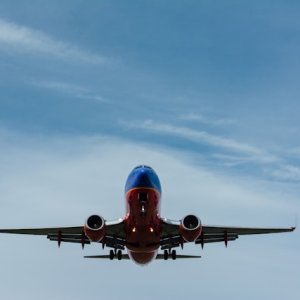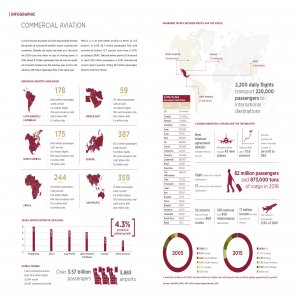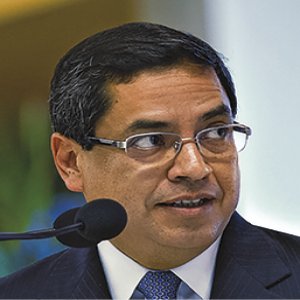Complementary Networks for Unique Connectivity

STORY INLINE POST
Q: To what extent has the appointment of Hernán Rincón as CEO shifted Avianca’s focus?
A: Hernán Rincón, with previous experience in Microsoft, unsurprisingly brought a special interest in using technology to boost market competitiveness. Technology can simplify traveling, such that we became one of the first airlines to invest in chatbots and Rincón wants the company to become a technology company that flies. Our automatic enquiry service, a chatbot nicknamed Carla, provides customer service and information to passengers via social networks. Carla’s immediate responses to passengers’ issues has generated a solid trend of customers adopting the chatbot technology and using our Avianca app.
Avianca has become more technological as promised by Rincón when he entered the company. He aims to implement efficient processes that save time and improve Avianca’s service. Cloud computing is also helping us work internally more harmoniously in real time and connectivity is a fundamental feature of his strategy.
Q: To what regions and strategies do you contribute your success as an airline in the Americas?
A: Mexico is a key market in which Avianca has grown steadily during the last five years. We are capitalizing on this improved brand positioning. Both our operations in the capital city and Cancun look healthy but the latter is expanding following increased demand from Latin American vacationers visiting Mexico. This has led to two more carriers, Copa Airlines and Interjet, now offering the Cancun to Bogota route as well as Avianca and LATAM Airlines. Since we have acquired new corporate accounts in Mexico, we are adding services with premium feeders like the Boeing 787 Dreamliner that served on the Bogota to Mexico route throughout the third quarter of 2016. This aircraft is expected to return to the same premium route and consolidate our optimism of our development as a carrier.
Certain routes need to be consolidated such as Cancun to Lima, which started a year and a half ago. Operating four times a week year-round at load factors above 90 percent indicates a daily flight would be well-received by the market. We can capitalize on this maturing market of visitors from Peru. Our supply will always respond to demand especially from capital cities such as Mexico City, Lima and Buenos Aires. We are also expectant of traffic increasing from Brazil following its economic recovery.
Q: How do you evaluate your growth considering results based on inbound and outbound traffic?
A: We take both inbound and outbound travel into account, to get an accurate evaluation of each market’s potential. We do not prioritize one direction but are holistic and interconnected between different airports. Avianca’s whole team works toward one goal rather than prioritizing just flights from Mexico at these headquarters. We transported 772,000 people within Latin America in 2016, representing 3 percent growth over 2015, despite new competition for our routes. Competitors entered the market connecting Lima, Cancun and Bogota but we sustained our performance, and even built on it. New market entrants, rather than taking business from us, stimulated demand and we both benefited.
Q: How will your corporate strategy further increase your business in Mexico?
A: Promoting Mexico in Colombia and vice versa stimulates a desire to travel to these locations. Increasing connectivity through our hubs also gains us access to new markets. In the second half of 2016 this meant opening unexplored routes to connect domestic markets in Mexico and Central America with South America and Europe, such as a Bogota-Cusco-Peru route, and a daily service started in March 2017 connecting Madrid and Bogota. A stimulus for this was the removal of the need for a visa for Colombians to travel to Spain. The new daily flight we have put in place from Mexico and Santiago de Chile to Bogota takes advantage of our connectivity in Bogota and appeals to corporate travelers.
All airlines face the bottleneck of existing facilities through the region, like AICM. We remain positive about the huge potential that the new airport will offer in 2020. This scenario is repeated in many other countries where our service growth and that of the industry together are already stretching key airports’ capacity like Bogota or Lima. Airlines are being flexible deploying larger aircraft where it is commercially and financially viable and taking advantage of every possible opportunity for red-eye flights to keep growing.
Q: What differentiates Avianca from competitors in terms of passenger experience?
A: For both long and short-haul flights, all our Airbus jets offer personal inflight entertainment systems. Avianca is also advancing in terms of renewals, including our next flagship aircraft, the Boeing 787 Dreamliner. We have 10 units in our fleet already and expect to replace the rest to this standard in the coming years.
Aside from ease of using our service thanks to increased technology and our prices, our flexibility is not competed. Our multi-hub strategy relies on our location in El Salvador which provides this unusual connection between the Caribbean, Peru and Colombia. It also means we can offer corporate flyers the possibility of returning via different airports to better plan their business trips. Our corporate program Preferencia is a priority to promote in Mexico, which helps companies use their budgets effectively. No other carrier in the region offers connectivity from Canada to Argentina.
Though customization we offer a growing array of ancillary services to help travelers create tailored trips. Services like additional baggage, unaccompanied minors and preferred seating assignment with a fee for promotional fares have been added to our customer service list. Before the latter feature existed, our passengers had to wait until 24 hours before their flights to check in and choose seats. This new feature eases travelers’ minds on high-season flights while opening the alternative to secure coveted seats like emergency exits or the first row behind business class with more legroom.
Q: What challenges specific to the region do you face and hope to receive support to overcome?
A: One of the biggest challenges to our business model and strategy is the low-cost airlines phenomenon. These companies have become a powerful reality in the region, which we regard with respect and a highly analytical perspective to respond competitively. There are low-cost airlines in practically every market we service in the continent, including Gol Airlines and Viva Colombia. Their presence consistently pressures other airlines’ fares but we realize the phenomenon has stimulated higher demand even for full-service carriers like Avianca. The strength of these players is determined by the market’s infrastructure and economic development.
We are planning and executing initiatives to remain relevant in pricing. We have also emphasized our brand leverage and product attributes in our communications to help passengers see the differentiated value they get from flying with us. We have the fleet capacity to serve each market with the utmost flexibility. While some of our competitors offer a single high-density fleet configuration, we can change from 48-68 seats in our ATRs to our 120-198 seats Airbus family.
Mexico is one of the leading countries in regulations. We may find countries with more limited services or governmental complications, such as Venezuela, which makes operating in their countries too difficult for airlines. This damages economies as we are more than travel companies. Airlines move business travelers and tourists but our close complement is cargo. Taking advantage of carrying cargo in the bellies of our passenger planes makes our business profitable and stimulates countries’ economies. We schedule flights for Avianca Cargo and our sister company AeroUnion, the combination of which is crucial to penetrate the North American market.
Q: What other alliances are on the horizon to boost Avianca’s market participation?
A: The airline has a strong connectivity worldwide thanks to its membership in Star Alliance. The airline also holds several code-sharing agreements that provide increased options to its passengers. Outside of direct alliances with other airlines, we signed several cooperation agreements at the end of 2016 with land transportation companies. National Express, a bus company in the UK, as well as an alliance with Great Western Railway help us reach 12 destinations each by connecting our flight to London with other cities by bus or train.
As a multinational company, we are always open to exploring cooperation schemes that suit our business model and communicate Latin America’s singularity and beauty. Agreements reached through our loyalty business unit Life Miles, for example, have built a solid network of nonairline partners like banks and hotels to enable travelers to create experiences to explore Latin America.
























